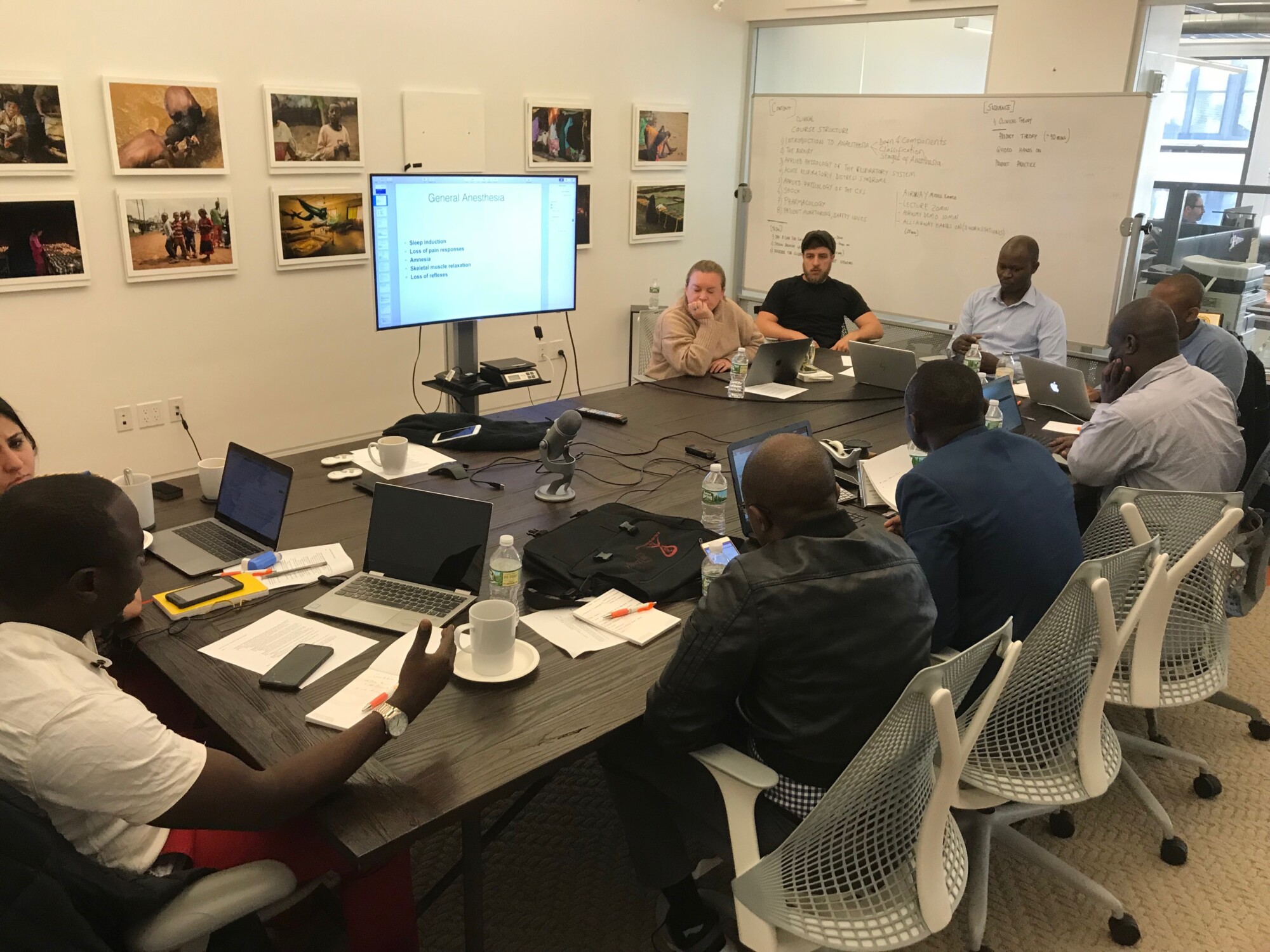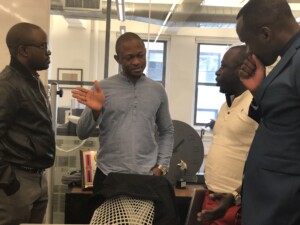
What Our Clinical Trainers Can Teach Us



A week and a half ago, five of our clinical trainers came to visit our NYC offices. The team of trainers included Dr. Sipuka Ndaba and Dr. Masuzyo Zyambo from University Teaching Hospital in Zambia, Dr. Ansbert Sweetbert and Dr. Mwemezi Kaino from Kilimanjaro Christian Medical Centre in Tanzania, and Dr. Howard Nelson-Williams, who works at Johns Hopkins University School of Medicine in Baltimore and helped us design our training from the ground up. All five have trained dozens of local anesthetists on the UAM, but the purpose of their visit wasn’t UAM training as usual.
Instead, the clinicians were in town to help us revamp our clinical training model. The hope was that their experiences on the front lines of training would give us a better window into how our curriculum can be expanded to meet the needs of a diversified user base. Their contextual expertise helped us define and outline various versions of our simulations and how they can be tailored to specific clinical environments. We also talked a lot about how we can take what we’ve learned from UAM simulation trainings and apply it to a CCV training curriculum.

All throughout the two-day roundtable discussion, trainers lauded the benefits of simulation training. Dr. Sweetbert said that simulations “allows you to go beyond theory in a situation where you don’t have drugs and/or a patient at the health centre(s).” Dr. Kaino, meanwhile, appreciates the opportunity for repetition, saying, “it offers a chance to repeat parts that a trainee has not yet mastered… you can repeat over and over again until they’ve mastered it.”
Dr. Kaino went on to note, “Repetition is the mother of learning and it is the only way forward.”
Simulation training is becoming central to how we introduce our products to new users and facilities. We’re excited that our trainers get to be involved not just in execution, but in the formation and expansion of our training model.